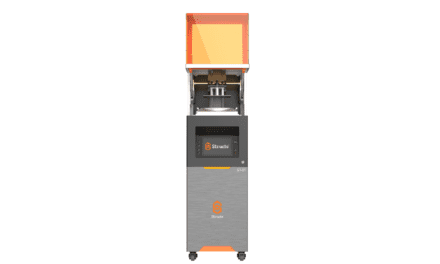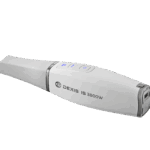Ordering lab supplies can be a slow and disjointed process. Soogalu’s platform aims to bring that idea into the 21st century.
By Steven Martinez
Marc Lemchen, DMD, founder of Lemchen Salzer Orthodontics in New York City, is among a rare breed of orthodontists in that when he isn’t working at one of the largest orthodontics practices in the largest city in the U.S., he spends his time founding companies.
His latest company Soogalu, founded with his longtime business partner Todd Blankenbecler, president and CEO of EasyRx, is an orthodontic lab supply ordering platform for both commercial and in-office labs. It offers products like 3D printing resins, aligner and retainer components, and other necessary lab-focused supplies.
The first thing that probably stands out about Soogalu is the name, a funny-sounding, somewhat foreign word spelled phonetically. Lemchen can’t remember exactly how they came up with it, with vague recollections of a Finnish origin, but says he mostly was searching for something that stood out and was easy to remember, like Google.
“It’s been spelled five different ways,” says Lemchen. “I think we’re just looking for a cute name that would be memorable, and then we tried to make it easy enough to spell.”
Soogalu follows a formula for new companies that Lemchen first developed in the 80s using what he refers to as his modus operandi—taking established ideas and turning them on their head. He first did this in 1988 when he founded Dolphin Imaging, which later became Dolphin Imaging and Management Solutions. At the time, Lemchen was trying to develop a way to digitize X-rays on a computer to replace the old method of tracing them on tracing paper. The idea eventually led to the development of sonic digitizing, which became the basis for Dolphin. The company was eventually sold to Patterson Dental in 2008.
“The name Dolphin came from our first official [vice president] of marketing, who said you want a simple name, not related to technology and easy to spell,” says Lemchen. “Well, you’d never realize how many different ways people can spell it.”
Soogalu wants to turn ordering lab supplies on its head by emulating the retail ordering process that Amazon pioneered and perfected. Ordering lab supplies tends to be an analog process, says Lemchen, often requiring phone calls and manual record-taking for inventory purposes. Soogalu puts the process online, offering cloud-based features for tracking inventory and keeping records, which is important for products like resins, for which the FDA requires labs to know the type, date, and lot number.
Soogalu is interactive, guiding lab workers through the ordering process and confirming the orders received, similar to an Amazon ordering experience. It also works with EasyRx to confirm when appliances are coming in and going out. It can keep track of your supplies, what you use, and how often you use them.
“This is going to be more like your Amazon system where you can go back and see what it was that you ordered, so you can order again the same way,” says Lemchen. “It’s clear what you’ve used in the past and what you are likely to use in the future.”
Access to the platform doesn’t require a subscription so far, and Lemchen stresses that this is a lab-facing, more than a doctor-facing product, treating the account owner as a lab rather than an individual. It also follows another trend of Lemchen-founded companies that begin small initially, iterating on the original idea. In other words, it is still a developing product, with more features to come.
“We’re going to facilitate the whole ordering process and try to get as many things from one supplier as possible,” says Lemchen. “And we’re going to look for innovative products, such as the Leone expander system, a really great system, and the software that comes with it.”
As new technologies like 3D printing become cheaper and digital scanning tools and software become more advanced, the in-office lab is in a state of flux, says Lemchen. In-office labs used to be limited to making acrylic retainers. But practices that are large enough to justify the inclusion of an in-office lab can now make not just retainers but also 3D models, custom brackets, and clear aligners. After attending a dental conference in Cologne, Germany, Lemchen says what he saw there made him certain that labs will someday be making and repairing metal appliances.
“There are a number of metal printers that are small enough to be in an office laboratory, and the cost of these 3D metal printers has come down significantly,” he says. “So, I’m sure in-office metal printing will become more common.”
For private practices, in-office labs are a self-limiting prospect, says Lemchen. The practice must have enough space, staff, and revenue to afford and house the technology it needs to become a mini orthodontic appliance manufacturer. But for those orthodontists who can have one, it allows greater control over costs and efficiency. By making things in-office, a practice can save on lab fees and shipping costs, which add up in a high-volume business like orthodontics.
“It gives you the ability to control timing. If there’s [a patient] who needs something and is leaving the country next week, you can get what they need done, period,” says Lemchen. “And you can be more innovative. You can sit down with the lab technician and design what you want, specifically, as opposed to having a conversation about it.”
Lemchen says he was drawn to orthodontics when he was young because he was always curious about how things work. As a kid, he remembers enjoying a TV program about making bicycles, and early in his career, he was fascinated by the research and development side of orthodontics. He was part of the original group of orthodontists that developed lingual brackets. Over the years, he developed new ideas and founded several companies, such as EasyRx, Dolphin, CADflow, Zeeno Robotics, and now Soogalu.
He says not every idea he ever had was successful or became a company. Nor was every idea orthodontics related—he patented an idea for a device that warns people when the motor is running on a boat, that Mercury Marine later licensed from him. In his office, he created a digital intercom system that tells staff where to be and tracks how long the message was sent before it was responded to. But through it all, he says, he never let a good idea go without at least seeing what it could become.
“The thread that ties everything together in my mind is that every orthodontist, me included, is absolutely sure that they have the idea for the thing that’s going to change everybody’s life in orthodontics,” says Lemchen. “I have a lot of those ideas. The difference is that I’ve been successful enough in my practice that I’ve been able to fund some of those ideas and make them into reality. And it’s actually a fun thing to do.”OP










